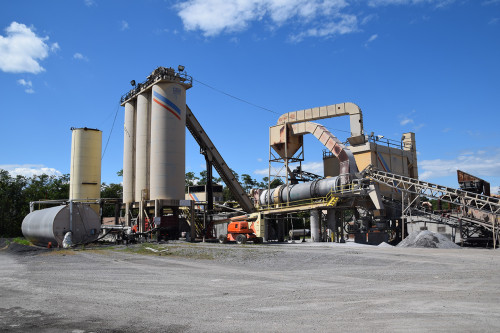Hot Mix Asphalt Paving: Your Gateway to Costs Angled Parking Solutions
Hot Mix Asphalt Paving: Your Gateway to Costs Angled Parking Solutions
Blog Article
Opening the Secrets of Warm Mix Asphalt Technology
Exploring the depths of hot mix asphalt innovation reveals a world where precise processes and accurate formulations assemble to shape our roads and infrastructure. The fusion of fillers, binders, and aggregates isn't merely a construction job yet a critical orchestration of durability and performance. As we peer right into the complex dance of parts, a tapestry of strength and sustainability unravels. What lies below this surface of asphaltic proficiency, and what secrets wait to be unveiled in the world of leading developments?
Relevance of Hot Mix Asphalt
Warm Mix Asphalt plays a crucial duty in modern framework advancement as a result of its toughness and cost-effectiveness. As the most generally utilized leading material for roadways, highways, and auto parking whole lots, Hot Mix Asphalt provides an array of benefits that add to its importance in building tasks. One essential advantage is its capability to hold up against heavy traffic tons and harsh weather condition problems, providing a trustworthy and resilient surface area for transport networks. Additionally, Warm Mix Asphalt is cost-effective in both preliminary building and construction and long-term maintenance, making it a favored option for several framework projects.
The resilience of Hot Mix Asphalt stems from its make-up, which includes accumulations, binder, and filler materials that are carefully picked and mixed to fulfill certain efficiency demands. In general, the importance of Warm Mix Asphalt in facilities development can not be understated, as it proceeds to be a cornerstone of modern building methods.
Parts of Asphalt Mixes
The make-up of asphalt mixes is composed of thoroughly chosen accumulations, binder, and filler products that are critical for accomplishing particular performance demands. Accumulations are the main component of asphalt mixes, providing strength and stability. The binder, typically bitumen or asphalt cement, holds the accumulations with each other and provides flexibility and toughness to the mix.
The mix and percentage of these parts play a significant function in establishing the top quality and efficiency of the asphalt mix. Designers meticulously design the mix to meet specific needs, considering elements like web traffic volume, climate problems, and sidewalk life expectancy. Appropriate selection and balancing of accumulations, binder, and fillers are crucial for creating sturdy, durable asphalt sidewalks.
Mixing and Production Techniques

When the accumulations are picked, the binder, frequently asphalt cement, is included to bind the products with each other. The binder's top quality and quantity substantially affect the mix's resistance, toughness, and versatility to environmental variables. Additionally, fillers like hydrated lime or Portland cement may be incorporated to boost details qualities of the asphalt mix, such as its workability or wetness resistance.
During production, the accumulations and binder are heated up, commonly Visit Your URL in between 250-325 ° F(121-163 ° C ), to assist in mixing and ensure appropriate coating of the accumulations. The blending process needs to be complete to attain an uniform mix that promotes the desired performance characteristics of the asphalt. Numerous techniques, such as set mixing or drum blending, are utilized to achieve consistent and high-quality asphalt blends for building and construction jobs.
Factors Influencing Asphalt Performance
Elements affecting asphalt performance include an array of variables that affect the resilience, long life, and overall top quality of asphalt pavements. One vital element is the top quality of materials utilized in the asphalt mix.

Layout considerations, such as sidewalk thickness and drain, are essential in making sure the long-term efficiency of the asphalt sidewalk. By carefully considering these contractors, engineers and factors can optimize asphalt efficiency and boost the solution life of pavements.
Sustainable Practices in Asphalt Technology

Furthermore, the growth of warm-mix asphalt (WMA) technologies has actually acquired traction over the last few years. WMA permits the manufacturing and placement of asphalt mixes at lower temperatures compared to standard hot-mix asphalt, causing decreased energy usage and greenhouse gas discharges. The usage of porous asphalt blends can aid minimize stormwater drainage problems by allowing water to penetrate through the sidewalk and right into the ground, promoting all-natural water filtration and recharge procedures. By executing these lasting methods, the asphalt industry can add to building an extra durable and ecologically friendly infrastructure network.
Final Thought
In conclusion, warm mix asphalt innovation plays an essential function in contemporary facilities growth because of its sturdiness and cost-effectiveness. By carefully stabilizing components, utilizing correct mixing strategies, and thinking about various aspects, check this engineers can create premium asphalt blends that hold up against heavy traffic loads and extreme weather. Welcoming sustainable methods, such as utilizing warm-mix innovations and recycled materials, even more enhances the environmental kindness of asphalt innovation.
Mixing and manufacturing strategies in hot mix asphalt innovation entail the specific combination and processing of accumulations, binder, and fillers to develop a long lasting and high-performance asphalt mix.Elements influencing asphalt efficiency incorporate an array of variables that impact the sturdiness, durability, and total top quality of asphalt sidewalks. Sustainable practices in asphalt technology encompass numerous efforts aimed at lowering the environmental impact of asphalt manufacturing and paving processes. By including recovered asphalt sidewalk (RAP) and recycled asphalt shingles (RAS) into new asphalt mixes, the industry can dramatically reduce the consumption of raw products and energy, while additionally reducing landfill waste.
WMA enables for the manufacturing and placement of asphalt blends at lower temperatures compared to i thought about this traditional hot-mix asphalt, resulting in reduced energy usage and greenhouse gas emissions.
Report this page